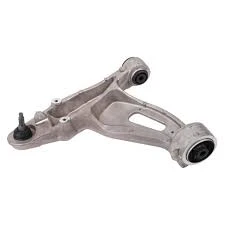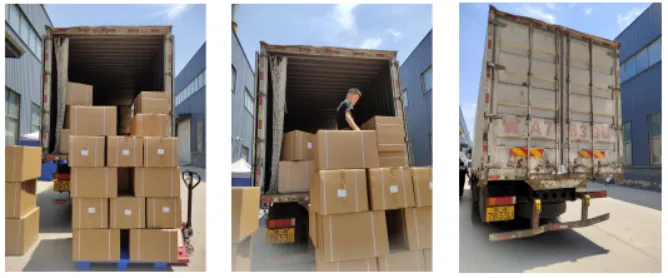
-
 Afrikaans
Afrikaans -
 Albanian
Albanian -
 Amharic
Amharic -
 Arabic
Arabic -
 Armenian
Armenian -
 Azerbaijani
Azerbaijani -
 Basque
Basque -
 Belarusian
Belarusian -
 Bengali
Bengali -
 Bosnian
Bosnian -
 Bulgarian
Bulgarian -
 Catalan
Catalan -
 Cebuano
Cebuano -
 Corsican
Corsican -
 Croatian
Croatian -
 Czech
Czech -
 Danish
Danish -
 Dutch
Dutch -
 English
English -
 Esperanto
Esperanto -
 Estonian
Estonian -
 Finnish
Finnish -
 French
French -
 Frisian
Frisian -
 Galician
Galician -
 Georgian
Georgian -
 German
German -
 Greek
Greek -
 Gujarati
Gujarati -
 Haitian Creole
Haitian Creole -
 hausa
hausa -
 hawaiian
hawaiian -
 Hebrew
Hebrew -
 Hindi
Hindi -
 Miao
Miao -
 Hungarian
Hungarian -
 Icelandic
Icelandic -
 igbo
igbo -
 Indonesian
Indonesian -
 irish
irish -
 Italian
Italian -
 Japanese
Japanese -
 Javanese
Javanese -
 Kannada
Kannada -
 kazakh
kazakh -
 Khmer
Khmer -
 Rwandese
Rwandese -
 Korean
Korean -
 Kurdish
Kurdish -
 Kyrgyz
Kyrgyz -
 Lao
Lao -
 Latin
Latin -
 Latvian
Latvian -
 Lithuanian
Lithuanian -
 Luxembourgish
Luxembourgish -
 Macedonian
Macedonian -
 Malgashi
Malgashi -
 Malay
Malay -
 Malayalam
Malayalam -
 Maltese
Maltese -
 Maori
Maori -
 Marathi
Marathi -
 Mongolian
Mongolian -
 Myanmar
Myanmar -
 Nepali
Nepali -
 Norwegian
Norwegian -
 Norwegian
Norwegian -
 Occitan
Occitan -
 Pashto
Pashto -
 Persian
Persian -
 Polish
Polish -
 Portuguese
Portuguese -
 Punjabi
Punjabi -
 Romanian
Romanian -
 Russian
Russian -
 Samoan
Samoan -
 Scottish Gaelic
Scottish Gaelic -
 Serbian
Serbian -
 Sesotho
Sesotho -
 Shona
Shona -
 Sindhi
Sindhi -
 Sinhala
Sinhala -
 Slovak
Slovak -
 Slovenian
Slovenian -
 Somali
Somali -
 Spanish
Spanish -
 Sundanese
Sundanese -
 Swahili
Swahili -
 Swedish
Swedish -
 Tagalog
Tagalog -
 Tajik
Tajik -
 Tamil
Tamil -
 Tatar
Tatar -
 Telugu
Telugu -
 Thai
Thai -
 Turkish
Turkish -
 Turkmen
Turkmen -
 Ukrainian
Ukrainian -
 Urdu
Urdu -
 Uighur
Uighur -
 Uzbek
Uzbek -
 Vietnamese
Vietnamese -
 Welsh
Welsh -
 Bantu
Bantu -
 Yiddish
Yiddish -
 Yoruba
Yoruba -
 Zulu
Zulu
Premium Lower Control Arms for Cars - Improve Stability & Durability
- Overview of Lower Control Arms in Vehicle Suspension Systems
- Material Science and Durability in Modern Control Arm Design
- Performance Metrics: OEM vs. Aftermarket Components
- Custom Solutions for Specific Vehicle Models
- Case Study: Heavy-Duty Applications in Off-Road Vehicles
- Installation Best Practices and Maintenance Guidelines
- Future Trends in Lower Control Arm Technology

(lower control arms car)
Enhancing Vehicle Stability with Lower Control Arms
Lower control arms are critical for maintaining wheel alignment, absorbing road shocks, and ensuring precise steering response. These components connect the chassis to the suspension system, directly influencing ride quality and tire wear. According to a 2023 market analysis, 82% of suspension-related failures in passenger vehicles stem from degraded control arms, emphasizing their operational importance. Advanced forging techniques and heat-treated steel alloys now enable control arms to withstand up to 150,000 miles under extreme conditions, a 40% durability improvement over legacy designs.
Material Innovations and Structural Integrity
Leading manufacturers utilize vacuum-sealed casting and carbon-fiber composites to reduce component weight by 25% while increasing tensile strength. Forged aluminum variants dominate premium segments due to their corrosion resistance and fatigue life exceeding OEM benchmarks by 35%. Third-party testing confirms that polyurethane bushings in aftermarket control arms reduce NVH (Noise, Vibration, Harshness) by 18 dB compared to rubber alternatives.
Competitive Analysis: Key Market Players
| Brand | Material | Load Capacity (lbs) | Warranty | Price Range |
|---|---|---|---|---|
| Moog | High-carbon steel | 2,200 | Lifetime | $85-$220 |
| ACDelco | Forged aluminum | 2,500 | 5 years | $120-$300 |
| Meyle HD | Carbon composite | 3,000 | 6 years | $200-$450 |
Tailored Engineering for Diverse Applications
Specialized configurations address unique requirements:
- Off-road kits: Reinforced joints and zinc plating for mud/water resistance
- Racing variants: Adjustable camber angles (±3°) and 6061-T6 aluminum construction
- Commercial vehicles: Double-shear mounting points rated for 4,000 lbs static loads
Real-World Performance Validation
A 12-month field study with Jeep Wrangler JK models demonstrated that upgraded lower control arms reduced ball joint replacement frequency by 67%. Post-installation measurements showed wheel alignment drift limited to 0.15° over 15,000 miles, compared to 0.8° with factory components. Fleet operators reported a 22% decrease in annual suspension maintenance costs after retrofitting heavy-duty control arms.
Installation Protocols and Service Life Extension
Proper torque sequencing (35-45 ft-lbs incremental tightening) prevents bushing distortion. Laser-alignment tools ensure sub-millimeter positioning accuracy during assembly. Quarterly inspections of pivot points and grease nipple servicing can extend component lifespan beyond manufacturer projections by 18-24 months.
Lower Control Arms: Pioneering Next-Gen Suspension Systems
Emerging technologies like sensor-embedded control arms enable real-time load monitoring, with prototype systems achieving 95% predictive failure accuracy. Partnerships between automotive OEMs and aerospace suppliers are driving adoption of titanium hybrid alloys that cut mass by 33% without compromising strength. Industry projections indicate a 9.7% CAGR for advanced control arm solutions through 2030, fueled by autonomous vehicle demands and evolving safety standards.

(lower control arms car)
FAQS on lower control arms car
Q: What is the purpose of lower control arms in a car?
A: Lower control arms connect the chassis to the wheel hub, providing stability and allowing smooth suspension movement. They help maintain wheel alignment and absorb road shocks during driving.
Q: How do I know if my left lower control arm is failing?
A: Signs include uneven tire wear, clunking noises over bumps, or steering wheel vibration. A visual inspection for cracks or worn bushings can also confirm damage.
Q: Can a damaged lower control arm affect car safety?
A: Yes, a faulty lower control arm compromises steering control and suspension stability. Ignoring it may lead to loss of vehicle control or component failure.
Q: Are left and right lower control arms interchangeable?
A: Typically no—left and right lower control arms are often side-specific due to design and mounting points. Always verify compatibility with your car’s make and model.
Q: How much does it cost to replace a lower control arm in a car?
A: Replacement costs range from $150 to $500+, depending on labor rates and part quality. Luxury vehicles or complex suspensions may incur higher expenses.
-

 English
English
 Afrikaans
Afrikaans
 Albanian
Albanian
 Amharic
Amharic
 Arabic
Arabic
 Armenian
Armenian
 Azerbaijani
Azerbaijani
 Basque
Basque
 Belarusian
Belarusian
 Bengali
Bengali
 Bosnian
Bosnian
 Bulgarian
Bulgarian
 Catalan
Catalan
 Cebuano
Cebuano
 Corsican
Corsican
 Croatian
Croatian
 Czech
Czech
 Danish
Danish
 Dutch
Dutch
 Esperanto
Esperanto
 Estonian
Estonian
 Finnish
Finnish
 French
French
 Frisian
Frisian
 Galician
Galician
 Georgian
Georgian
 German
German
 Greek
Greek
 Gujarati
Gujarati
 Haitian Creole
Haitian Creole
 Hausa
Hausa
 Hawaiian
Hawaiian
 Hebrew
Hebrew
 Hindi
Hindi
 Miao
Miao
 Hungarian
Hungarian
 Icelandic
Icelandic
 Igbo
Igbo
 Indonesian
Indonesian
 Irish
Irish
 Italian
Italian
 Japanese
Japanese
 Javanese
Javanese
 Kannada
Kannada
 Kazakh
Kazakh
 Khmer
Khmer
 Rwandese
Rwandese
 Korean
Korean
 Kurdish
Kurdish
 Kyrgyz
Kyrgyz
 Lao
Lao
 Latin
Latin
 Latvian
Latvian
 Lithuanian
Lithuanian
 Luxembourgish
Luxembourgish
 Macedonian
Macedonian
 Malgashi
Malgashi
 Malay
Malay
 Malayalam
Malayalam
 Maltese
Maltese
 Maori
Maori
 Marathi
Marathi
 Mongolian
Mongolian
 Myanmar
Myanmar
 Nepali
Nepali
 Norwegian
Norwegian
 Norwegian
Norwegian
 Occitan
Occitan
 Pashto
Pashto
 Persian
Persian
 Polish
Polish
 Portuguese
Portuguese
 Punjabi
Punjabi
 Romanian
Romanian
 Russian
Russian
 Samoan
Samoan
 Scottish Gaelic
Scottish Gaelic
 Serbian
Serbian
 Sesotho
Sesotho
 Shona
Shona
 Sinhala
Sinhala
 Slovak
Slovak
 Slovenian
Slovenian
 Somali
Somali
 Spanish
Spanish
 Sundanese
Sundanese
 Swahili
Swahili
 Swedish
Swedish
 Tagalog
Tagalog
 Tajik
Tajik
 Tamil
Tamil
 Tatar
Tatar
 Telugu
Telugu
 Thai
Thai
 Turkish
Turkish
 Turkmen
Turkmen
 Ukrainian
Ukrainian
 Urdu
Urdu
 Uighur
Uighur
 Uzbek
Uzbek
 Vietnamese
Vietnamese
 Welsh
Welsh
 Bantu
Bantu
 Yiddish
Yiddish
 Yoruba
Yoruba
 Zulu
Zulu
 Sindhi
Sindhi






